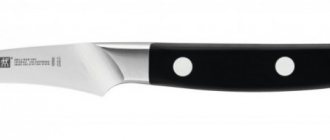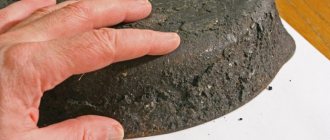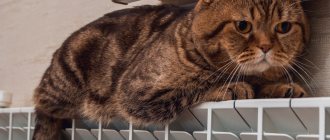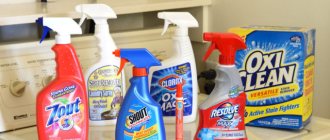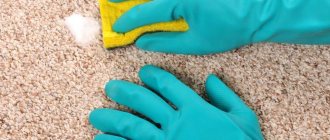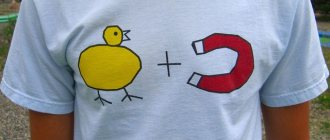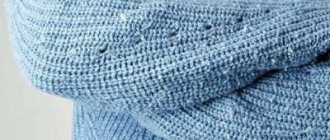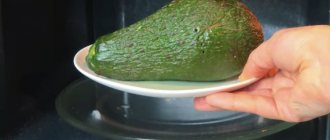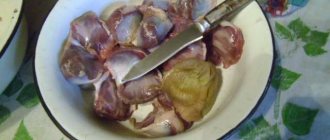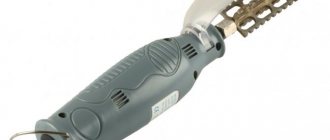Tripe, or tripe, unlike liver and other popular offal, is not used so often in professional cooking. But in terms of taste and nutritional value, it is not inferior even to meat tenderloin, and in some moments even surpasses its indicators. The reason for this injustice is simple - people do not know how to cook tripe at home, so it is not in demand in restaurants either. Few people know that in some countries this component is highly valued and costs more than selected meat.
Tip: Tripe is especially useful for athletes and people leading an active lifestyle. The product contains a lot of pure protein, minerals and vitamins with a fairly low calorie content. It is well absorbed by the digestive system and very rarely causes intolerance.
Recipes based on tripe are quite simple; most of the trouble goes into the preparatory stage. Another negative point in preparing the product is that it will not be possible to quickly bring it to the desired state. It will take at least 5-6 hours to properly clean and boil the workpiece. True, this does not mean that you will have to do something for the entire specified time. With the right approach, the amount of action can be reduced to a minimum.
How to prepare a tripe
- The product should have a light gray color. The surface is shiny with leathery hairs. Sometimes the lower part of the stomach is found on sale. It is without fibers, but its surface is lined with shiny diamonds.
- The offal should not have an unpleasant suspicious odor other than the aroma of raw meat.
- The tripe should be clean, free of mucus and green or putrid areas.
While many people know what tripe is, not everyone can boast of knowledge about its beneficial qualities. Among the mineral substances that are included in this product, nutritionists highlight vitamins such as B1, B2, B12, H, PP. As for the other useful components, tripe contains a large amount of iodine, potassium, phosphorus, sulfur and some other elements that are rarely found in food, but are necessary for the development and maintenance of the normal state of the human body at any age.
History and traditions
The ancient Romans loved not only fables about the stomach, but also the product itself: many modern Italian recipes using tripe have ancient roots.
The history of Armenian khash is also ancient: broth with tripe and goat meat khashou is mentioned in books of the 12th century. Kyrgyz, Uzbek, Kazakh kuyrdak (kuurdak), meat fried in oil with onions and the addition of tripe, has been known since the 15th century.
The most popular tripe soup in Turkish, Bulgarian, Serbian, Bosnian and Macedonian cuisines, ishkembe, is made from beef or sheep tripe. And the word “ishkembe” itself comes from the Persian shekambe, which translates as “tripe”.
The rich Polish soup flaki and the thick Italian stew trippa share the same tripe. And in the cuisines of China and Korea it is also held in high esteem: there it is an important ingredient in cold and warm salads and heh.
Of particular note is the British history of tripe. If only because, thanks to the English publication “Trumple Marketing Council”, we learned about World Tripe Day, which is celebrated on October 24th.
Britain's contribution to this topic is not small: its cuisine is replete with offal dishes, but its diversity in tripe preparation is, as some chefs believe, borrowed from other cuisines around the world. The statement that Armenian khash was born in ancient England can be called controversial, but there is definitely a similarity between Scottish haggis and Russian nanny: both dishes are prepared from lamb offal, which are stuffed in a special way into sheep (haggis) or lamb (nanny) rennet.
The abomasum is the fourth chamber of the ruminant stomach. By the way, another legendary Italian dish is prepared from it - lampredotto. Rennet is boiled with tomatoes, onions, herbs and spices and served either on panini or separately, with green pesto dressing.
Do you believe in the benefits of visiting cosmetologists?
Not really
In the Middle Ages, tripe was considered the food of the poor. After the autumn slaughter of animals, good meat was stored for the winter, but no one took the tripe: it is not stored for a long time, and there is a lot of fuss with it. Therefore, the poor took it instead of meat.
For its strange appearance, the tripe was nicknamed “Lancashire” or “land squid” - it was from the county of Lancashire that it began its march through the kitchens of many countries around the world, ending up in the poems of Shakespeare and Burns.
Offal - benefits and harms
The tripe is the front part of the cow's stomach. However, quite often many people refer to all the internal organs of an animal as tripe. This fact must always be taken into account so that there is no confusion in the store during the purchase. Trip is a by-product and may have a second name: beef tripe.
The tripe consists mainly of muscle fibers. Cooked tripe has a dense consistency, yellow-grayish color, and a specific aroma and taste. Offal can be found on sale unprocessed and already fully prepared for cooking.
When buying tripe, it is best to choose the second option, since you will have to tinker a lot with unprocessed offal. The process of preparing tripe can also be difficult.
Therefore, even despite the low cost, this by-product is not particularly popular.
Properties of tripe
Offal contains a fairly large amount of vitamins, among which vitamins B1, PP, B2, H, B12 are of particular value. In addition to vitamins, the offal contains various useful minerals, such as: iodine, zinc, copper, selenium, calcium, iron, magnesium, sulfur, potassium, phosphorus and some others. In addition to all this, the composition of tripe includes several essential substances that have antioxidant properties.
Carbohydrates are completely absent from tripe. Most of it is protein and very little fat. The ratio of proteins and fats is as follows: proteins -14.8 grams, fats - 4.2 grams. The calorie content of the offal is equal to 97 kilocalories. On average, the weight of one piece is about 1200 grams.
Benefits of tripe
Trip is not such a popular food product, so few people know about its beneficial properties.
Due to the absence of carbohydrates, this by-product does not increase blood glucose and has a beneficial effect on patients with diabetes.
Offal is classified as a dietary product, so it can be safely included in the diet menu. Dishes made from tripe will perfectly diversify the dietary table, and the rich broth will quickly saturate the body, without harming the figure at all. After some research, it was found that tripe soup can lift your spirits, banish insomnia and relieve fatigue.
How to choose, properly clean and cook tripe / Tips from chefs - article from the How to cook on
The abomasum is the fourth chamber of the ruminant stomach. By the way, another legendary Italian dish is prepared from it - lampredotto. Rennet is boiled with tomatoes, onions, herbs and spices and served either on panini or separately, with green pesto dressing.
Expert opinion
Ksenia Diyanova, expert on beauty, purity, harmony
Ask me any questions, I will be happy to answer!
It will take about 3 hours to keep the tripe in such a liquid, but you should monitor the solution itself so that it is constantly changed as it darkens. Beef tripe does not contain carbohydrates, so it is beneficial for diabetics and does not increase blood glucose levels. We cook beef tripe according to all the rules of the art of cooking. Ask me all your questions, I will be happy to answer!
How to wash beef tripe
- This by-product is extremely rarely available for sale in regular supermarkets. You can buy it in small farm stores and markets, as well as from individuals in fresh or frozen form.
- Fresh tripe does not store well. It can be stored in the refrigerator for 1 day, but if you do not plan to use the subproduct in the near future, you need to freeze it, tightly wrapped in a bag.
- On the other hand, cooked tripe dishes, such as soups and stews, usually become even better and more delicious on the second day due to the continued blending of flavors. Store leftovers in an airtight container in the refrigerator for up to 3-4 days, or freeze.
- After boiling the tripe until soft, you can come up with your own recipe for a dish based on it. The offal is surprisingly versatile, as it goes well with any product and is suitable for any cooking method. While tripe is most popular in boiled and stewed dishes (such as soups and stews), it can be baked, fried, and even smoked.
Italian butchers' method: First, hand-clean with salt to remove small food debris. Then soak for an hour in water with hydrogen peroxide: 1-2 tbsp. l. into a container containing so much water that it almost covers the scar. Periodically, the product needs to be wrung out like a sponge. Then rinse with cold running water until odors disappear completely.
Chorba
- Time: 2 hours 10 minutes.
- Number of servings: 5 persons.
- Calorie content of the dish: 137 kcal per 100 g.
- Purpose: first course.
- Cuisine: Bulgarian.
- Difficulty: medium.
The rich chorba tripe soup will become piquant and take on an appetizing color if you dilute a couple of tablespoons of tomato paste in the hot broth or add a little more paprika. The boiled offal should be soft, almost jelly-like, otherwise a “rubbery” taste will be felt even in the finished dish. Instead of sour milk, use natural unsweetened yogurt if desired. The soup will be hearty if you add corn grits or pieces of boiled beef to it. The beef tripe dish is served separately with a mixture of vinegar, garlic and pepper, which each guest adds to his plate.
Ingredients:
- beef tripe – 990 g;
- ground red pepper – 1 tsp;
- sour milk – 250 ml;
- eggs – 2 pcs.;
- flour - 3 tbsp. l.;
- paprika – 1 tsp;
- butter – 55 g;
- white bread – 75 g;
- salt - a pinch.
Cooking method:
- Rinse the cleaned offal thoroughly.
- Pour in water and bring to a boil. After 10-15 minutes, drain the liquid.
- Pour water over the tripe again and cook until tender. No salt should be added.
- Remove beef tripe from broth. Chop or cut the offal into small cubes.
- Fry the flour in a deep frying pan.
- Add beaten eggs. Mix.
- Gradually add sour milk.
- Pour in 3-4 ladles of boiling tripe broth in a thin stream, intensively breaking up the lumps with a wooden spatula.
- When the mass becomes homogeneous, pour into the pan with the remaining portion of the broth and stir.
- Add chopped tripe and salt. Bring the offal to a boil. Cook for 5 minutes, remove from heat.
- Melt butter in a saucepan. Add red pepper and paprika. Stir and combine with broth.
- Pour the chorba into a heated tureen.
- Cut white bread into cubes and fry.
- Garnish the beef tripe dish with golden-brown breadcrumbs or serve them separately.
Scar selection
The question of how to properly clean tripe is very important, but it is equally important to know how to choose the right starting product so that the dish then turns out to be of high quality. Therefore, when purchasing, you should pay attention to the following things:
- The color of a fresh scar should be cream or light gray with a beautiful shiny surface.
- Make sure there are no shiny diamonds on the surface of the tripe. Their presence means that the piece was cut from the lower part of the stomach, which is very difficult to cook tasty.
- The smell of the tripe should resemble regular meat, so if there is a strong or unpleasant aroma, it is best to refrain from purchasing it.
- Also, the tripe should not have mucus or other signs of rotting, since even if such places are cut off, the dish will still be tasteless.
Boiling stage
Now that it has been clarified how to clean tripe, one more step should be followed before starting cooking, namely boiling. It is required in any case, regardless of what the chef decides to cook from the ingredient in the future. On average, the cooking process takes approximately 5 hours, although in some cases it may take longer.
By the way, it is worth noting that even if the cleaning was carried out correctly, despite this, during heat treatment the tripe may well emit an unpleasant odor, so this must be done with the windows open.
How to clean tripe quickly and without unnecessary hassle?
- Shred the boiled tripe into strips and soak in vinegar for an hour.
- Add grated carrots, garlic, salt.
- Fry the onion, add spices, mix and place in a common container.
- Korean beef tripe is mixed and left in the cold for 12 hours.
But at the same time, as mentioned earlier, this product has very few calories - only 97 per 100 grams of product. It contains virtually no fat and no carbohydrates at all, so it will be an excellent component for anyone who adheres to proper nutrition.
Cooking recipes: salads
Step-by-step preparation of cold appetizers, or rather salads, consists of selecting ingredients and properly cutting the tripe. Quite interesting varieties of dietary or simply delicious salads are prepared from it.
Ingredient options:
- Beef tripe, boiled eggs, pickled gherkins, chopped walnuts, salad dressing or mayonnaise, dried herbs.
- Beef tripe, fresh cucumbers, boiled eggs, chickpeas, green onions, grated hard cheese, arugula leaves, olive oil.
Cleaning
As you probably saw at the first stage, the tripe has a rather distinct and very unpleasant odor. Incredible, but true - you can cook delicious dishes from this offal, but first you still need to get rid of the smell. Some people advise soaking the tripe for a long time in a vinegar solution, but boiling down the smell is more effective and will take less time.
Cut the tripe into palm-sized pieces, add water, put on high heat, bring the water to a boil and let it simmer for a short time, no more than ten minutes, then drain the water. Refill the tripe, return to the heat and repeat these manipulations until the smell disappears completely. In my case, this required 5 boils, after which you can ventilate the kitchen and no longer worry about anything.
How to clean beef tripe
The first step for people who want to know how to clean tripe at home is to cut the purchased piece into several pieces. This way it will be much easier to work with the ingredient. After this, you need to follow the following sequence of actions:
Expert opinion
Ksenia Diyanova, expert on beauty, purity, harmony
Ask me any questions, I will be happy to answer!
The smell of the tripe should resemble regular meat, so if there is a strong or unpleasant aroma, it is best to refrain from purchasing it. The product, boiled until soft, is cut into slices of the desired shape or size or used whole to make rolls. Nutritional value Ask me all your questions, I will be happy to answer!
Fried tripe
Heh is another option for how to cook tripe. This dish is typical of Korean national cuisine, and it is prepared exclusively from beef offal - with such an ingredient the dish turns out more tasty.
In order to make heh, you need to boil the tripe, which is recommended to do according to all the rules, and then cut it into small and thin strips. During the cooking process, you can pickle the onions. To do this, half a kilogram of heads should be cut into half rings and, sprinkled with 1.5 tablespoons of vinegar, left for a while.
After the cooked tripe has cooled, add three crushed cloves of garlic, as well as pickled onions. After this, the mass should be mixed and a couple of tablespoons of roasted sesame seeds should be added to it.
In order for the finished dish to be as piquant and aromatic as possible, its preparation should be completed correctly. To do this, heat 50 ml of sunflower oil in a frying pan and add the following set of spices to it:
In this composition, the seasonings should be thoroughly heated and the prepared mixture should be poured over the tripe, and then seasoned with a couple of tablespoons of soy sauce. The resulting dish should be placed in the refrigerator for a while - there it will be nourished and become very juicy and aromatic.
Knowing how to cook tripe in this way, you can truly surprise your household with a tasty and healthy dish.
How to properly clean beef tripe?
It is best to clean beef tripe outdoors or indoors with open windows, because... the procedure will be accompanied by a not very pleasant smell. First you need to prepare everything you need, after which you can begin the procedure:
- In addition to the tripe itself, we will need boiling water and cold water, a deep basin, table vinegar, potassium permanganate, coarse salt, slaked lime, baking soda and ammonia.
- Before you clean the offal of a recently slaughtered animal, you need to get rid of the stomach contents. In stores and markets, a product is sold that has already passed this stage of processing. In this case, simply wash the scar thoroughly and cut it into several large pieces, which will simplify the work.
- After the workpiece has been scalded with boiling water, the top layer of skin can be removed from it. We remove dirt and remaining grease, and then rinse the component several times in cold water.
- Usually, after such treatment, the unpleasant odor still remains. If it was a store-bought product, you can start boiling it.
- First, we use the most gentle and accessible method at home. Prepare the solution by mixing two tablespoons of table salt with a liter of water. Dip the scar into it and leave it for 3 hours. After some time, the liquid will darken, then the composition needs to be refreshed. We repeat this several times until the specified time is reached.
- If the desired result is not achieved, continue cleaning the product. This time we take not only salt, but also table vinegar. The salt concentration is the same, add vinegar by eye. The composition should be sour, but not unpleasant. Soak the scar again for 3 hours. If the salt approach was previously used, a fluid change will not be necessary.
- The lack of a positive result when using simple approaches or the initially poor condition of the scar requires thermal intervention. Boil the workpiece in salted water for 20 minutes, drain the water and repeat the procedure. To be sure, we take one more approach.
- A good result is obtained by using a solution of potassium permanganate. We prepare it from a small amount of crystals and boiled water. The color of the product should be pale pink. The tripe is soaked in it for 3 hours, after which it is rubbed with coarse salt and left alone for 30 minutes. The product remains to be rinsed in cold water and you can start cooking.
- As a last resort, prepare a solution of ammonia and vinegar. For 1 liter of water we take 5 ml of chemical components. Leave the scar in the liquid for 3 hours, rinse and use as intended.
Preparatory work
If you receive unpeeled tripe, you will have to work hard to prepare it for cooking. First, turn the offal inside out. Using a sharp knife, remove the mucous membrane that lines the inside of the ventricle. It is important to remove all fat, as it will spoil the taste of the finished offal.
Rinse the cleaned tripe thoroughly, preferably under running water. Then the tripe must be soaked. If you ignore this step, you will end up with a dish with a repulsive smell.
You can soak the tripe in a weak vinegar solution or in water with a few crystals of potassium permanganate. The process of soaking the offal should last at least 3 hours. Then you need to take it out and rub it well with table salt. Leave the offal in this form for thirty minutes, then rinse and boil it.
Offal - what is it?
- After scalding the workpiece with boiling water, you need to remove the top layer of skin from the scar, and also wash it in cold water in order to get rid of all the dirt and any remaining fat.
- Now you can go directly to how to clean tripe correctly. The first step is to use the most gentle methods. To do this, you will need to prepare a saline solution consisting of a liter of water and two tablespoons of salt. It will take about 3 hours to keep the tripe in such a liquid, but you should monitor the solution itself so that it is constantly changed as it darkens.
- If after this it was not possible to achieve the desired result and the unpleasant odor persists, then you need to proceed to the next stage of processing. To do this, prepare the same saline solution again, but additionally add vinegar to it by eye. The resulting mixture should have a sour taste, but not disgusting. The tripe should again remain in it for 3 hours, but there is no need to change the mixture.
- If all these measures do not lead to results, then you should use a solution of potassium permanganate. It should be slightly pink. The tripe is immersed in it for 3 hours, and then taken out and rubbed with salt. The ingredient is soaked in salt for 3 hours.
- As a last resort, prepare a solution consisting of 1 liter of water and 5 ml of ammonia with 5 ml of vinegar. The scar should also remain in this liquid for 3 hours, after which it should be rinsed well.
Offal contains a fairly large amount of vitamins, among which vitamins B1, PP, B2, H, B12 are of particular value. In addition to vitamins, the offal contains various useful minerals, such as: iodine, zinc, copper, selenium, calcium, iron, magnesium, sulfur, potassium, phosphorus and some others. In addition to all this, the composition of tripe includes several essential substances that have antioxidant properties.
Roll
- Time: 13 hours 30 minutes.
- Number of servings: 8 persons.
- Calorie content of the dish: 127 kcal per 100 g.
- Purpose: appetizer, main course.
- Cuisine: international.
- Difficulty: medium.
A juicy beef tripe roll is a real culinary masterpiece that can easily surprise even sophisticated gourmets. Trie requires a lot of preparation, so preparing an original appetizer or main dish for a special occasion should begin about a day before the celebration. You can add greens, carrots, and allspice to the filling. The offal roll will acquire a beautiful golden crust and become even more appetizing if you lightly fry it in a frying pan with aromatic garlic oil. Based on the rich broth, you can prepare sauce, soup, and other dishes.
Ingredients:
- beef tripe – 510 g;
- tomatoes – 85 g;
- onion – 115 g;
- cloves - to taste;
- lard – 55 g;
- potatoes – 60 g;
- garlic – 3 teeth;
- bay leaf – 3 pcs.;
- ground black pepper - to taste;
- allspice - to taste;
- salt - to taste.
Cooking method:
- Peel the beef tripe and immerse it in a container of cold water. Leave for 6 hours.
- Remove and scald with boiling water.
- Using a knife, scrape off any remaining mucous membrane from the offal. Rinse.
- Fill the tripe with water, add salt.
- After 2 hours, change the water. Cook for 3 hours over low heat.
- Place on a baking sheet or tray. Leave to cool at room temperature.
- Peel the potatoes.
- Cut the lard into slices or cubes, and remove the skin if desired.
- Place the cooled offal on a work surface. The edges can be trimmed to add tripe to the filling and give the future roll the correct rectangular shape.
- Season with ground black pepper and salt.
- Place the filling – lard, grated garlic.
- Form into a roll and tie with strong thread.
- Transfer the offal preparation into a large saucepan.
- Fill with cold water. Add diced onion, potatoes, chopped tomatoes, cloves, allspice, bay leaf. If desired, add white pepper and your favorite roots.
- Cook over low heat for 2 hours.
- Cool. Carefully pry up and remove the threads.
- The beef tripe roll is immediately cut into portions or left for an hour so that it “sets” and seals all the juices.
- Serve the offal dish with a side dish, such as green peas.
